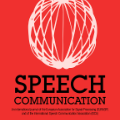Ensuring intelligible speech communication for hearing assistive devices in low-latency scenarios presents significant challenges in terms of speech enhancement, coding and transmission. In this paper, we propose novel solutions for low-latency joint speech transmission and enhancement, leveraging deep neural networks (DNNs). Our approach integrates two state-of-the-art DNN architectures for low-latency speech enhancement and low-latency analog joint source-channel-based transmission, creating a combined low-latency system and jointly training both systems in an end-to-end approach. Due to the computational demands of the enhancement system, this order is suitable when high computational power is unavailable in the decoder, like hearing assistive devices. The proposed system enables the configuration of total latency, achieving high performance even at latencies as low as 3 ms, which is typically challenging to attain. The simulation results provide compelling evidence that a joint enhancement and transmission system is superior to a simple concatenation system in diverse settings, encompassing various wireless channel conditions, latencies, and background noise scenarios.
翻译:暂无翻译



